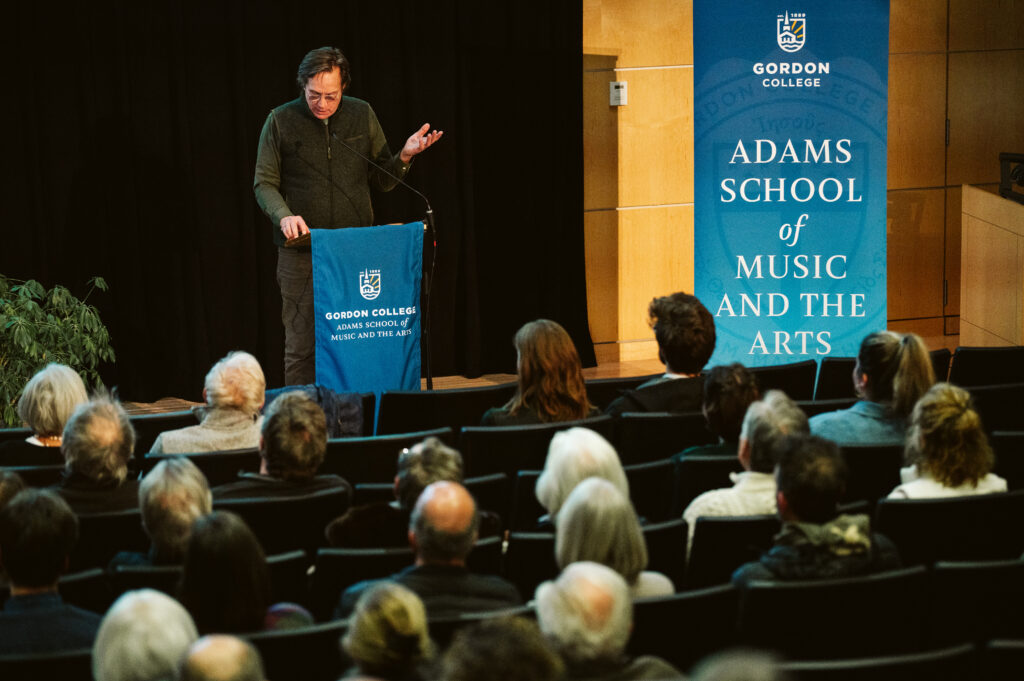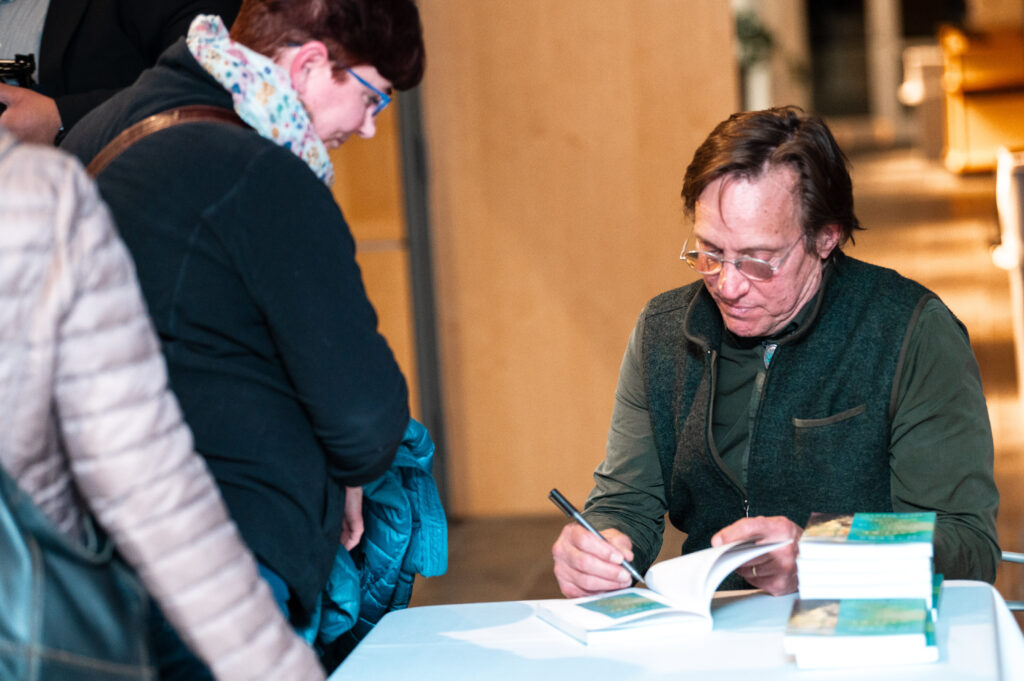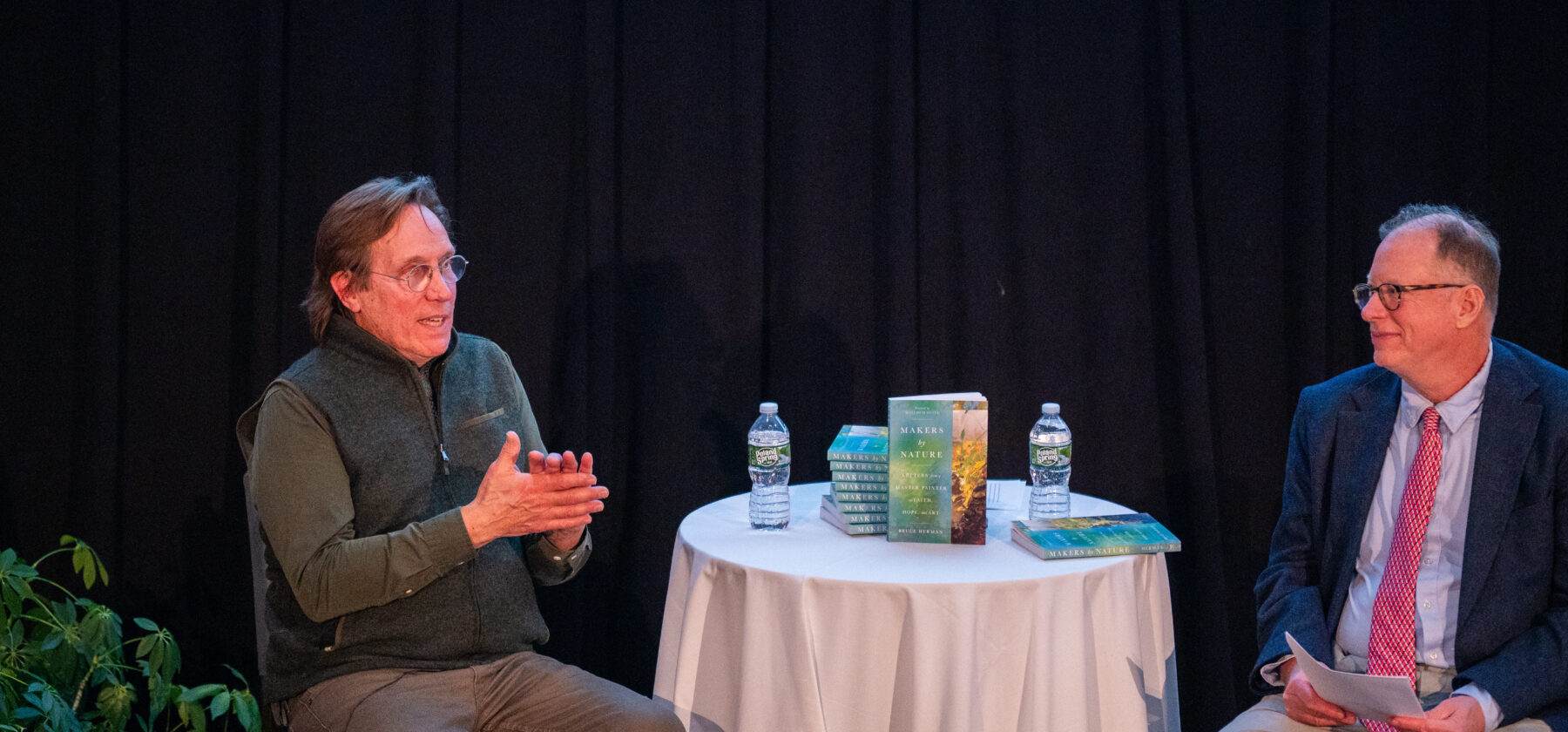How Bruce Herman’s Faith Transformed His Art—and Inspired His New Book
From starting the Art Department at Gordon College to having his paintings exhibited around the world, Bruce Herman has been creating since he was a child. Since his retirement from Gordon as the Lothlórien Distinguished Chair in the Fine Arts, Herman has taken on a new creative endeavor—authoring a book about art and faith called Makers by Nature.
On January 28 individuals from the greater Gordon community gathered to celebrate as Herman officially launched his book with a discussion on how he came to write it and why the relationship between faith, hope and art is so crucial.
Herman’s Journey: From Painter to Author of a New Book

According to Herman the title of his book came from the idea that, “Everybody is born an artist. Look at kids––they’re always making stuff. They have this urge to constantly be making constructive things, playing with Legos, making trees…Making goes to the heart of what we are and who we are. Most kids stop creating by the time they’re eight. Artists just never outgrew it.”
As Herman developed his art career, he began successfully selling his art, getting reviewed by the Boston Globe and having exhibitions in noteworthy art galleries. It was then that he started to realize that, to survive as a professional artist, he had to “make a name for himself.” He explained, “That phrase comes from the story in the Old Testament of the Tower of Babel. It’s a story about hubris. My art was starting to subvert my relationships in ways that I knew was not quite right, but I couldn’t quite figure out how to get around it.”
Then Herman became a Christian, and his newfound faith had a profound impact on his life and art. He was overwhelmed by the stories of the Bible, especially the story of Christ and his suffering. Biblical figures, as well as Christian heroes from the past and his own life, began to appear in his paintings. He started to use art as a means of processing his internal conflicts by wrestling with themes of brokenness, things becoming unglued and the desire for completion in Christ.
“A lot of times artists are vehicles for something bigger than themselves,” Herman said. “They barely know what they’re actually doing. They’re more trying to get at something, like an itch deep inside; they don’t necessarily have a direction in mind.” It’s this searching quality of art that Herman believes is so vital for humanity’s relationships with God and each other, which led to the inspiration for his book.
The Connection Between Art and Theology

In a Q&A period moderated by author Bill Cross, Herman shared that he was initially asked by InterVarsity Press to write a book defending the liberal arts. While he considered it, he didn’t feel that was the topic he was called to. When the publisher came back and asked what topic he would be interested in writing on, he gave it some thought and came up with the idea of fictional letters written to real people. InterVarsity loved the concept.
Herman went on to explain that he’s always loved writing letters to friends. In writing fictional letters for his book, he was able to explore big questions like: What is good art? What is the calling of a Christian artist? How is beauty relevant to our world?
When asked about his view on suffering and art in our difficult world, Herman responded that he believes art is a catalyst that helps all people––not just artists––process grief and hardship. “When things seem to be becoming unbalanced, meaning itself seems to be at stake,” he said. “The best art always comes out of an era in which things are not going great, because we have this need to go deeper. Art is not alone; it’s actually more for the whole community. Dostoevsky has this quote that, ‘Beauty will save the world.’ Without beauty, we will just keep hurting each other.”
Herman recounted his experience of leaving the Boston art community behind to move to the North Shore. That change ultimately opened the door for him to start the Art Department at Gordon. It also offered the chance to directly combine his faith and art. This intersectional theme continued throughout his career as a professor, as he dedicated himself to his students and community, serving them through his gifts.
“God is a maker, and we are makers. We are religious beings, but I think if we really want to know the Creator, we want to model ourselves after the Creator. So how can we slow down? What practical ways can we look longer at God? The best way to become more connected to our world and to one another is to stop boxing each other in, as well as boxing in God. Let your guard down.”
The Art of Loving Books and People
Bruce Herman will always be a keystone of the Gordon community, and now his legacy as a maker will continue in the world of writing, in addition to the visual arts.
If you enjoy great books about art or wish to learn more about the connection between art and faith, Makers by Nature: Letters from a Master Painter on Faith, Hope, and Art is available for purchase online today.
 The Bell
The Bell